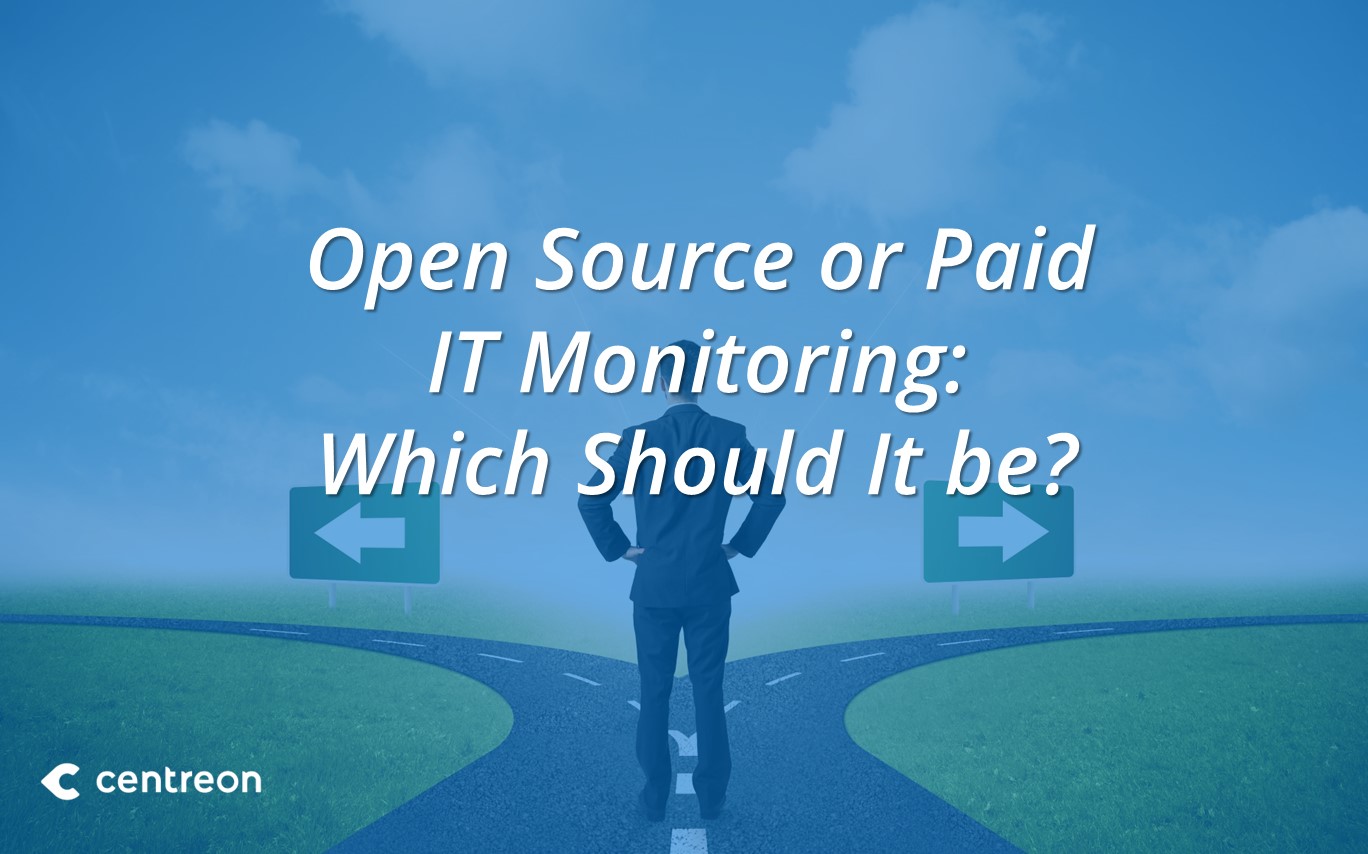When it comes to IT monitoring, an incredible diversity of solutions is available. The first broad choice is between an open source or a paid IT monitoring solution. Aside from their development approach, their acquisition costs are often contrasted. But how can you best compare such diverging models? The TCO (total cost of ownership) is a helpful method to refine the comparison and make the most appropriate choice. This is what this blog post investigates on your behalf.
TCO: A tool to compare divergent software models
Among the many criteria used to evaluate and pick the right IT monitoring solution, the one weighting the most is the cost. The first question asked will always be: “How much will it cost, now and over the longer term?”
Trying to answer this question accurately is when things get muddy. For a start, the paid option (or COTS, commercial off-the-shelf) comes with an annual software subscription fee whereas the open-source option’s price tag is 0$. So, in this scenario, you have in one corner, a solution that is free (apparently), and in the other, one that is not. But does the free solution automatically win the champion title for being less costly? Not necessarily. Many factors come into play, and a careful TCO analysis may very well disqualify the open source option as the most cost-effective solution.
Open source: a not quite free model
Open source options are ubiquitous as far as IT monitoring solutions go. In fact, open source IT monitoring software has changed how IT monitoring is done, enabling a more collaborative development approach. Such solutions also contributed to democratizing IT monitoring, by making the practice accessible to a wider community.
But this does not mean these options are without costs. That’s why we must look beyond the acquisition cost to the more accurate total cost of ownership, a.k.a. TCO. This ponders the acquisition cost along with any cost incurred from the solution’s initial deployment to its daily operation, up to its decommissioning. Such direct costs can include servers, storage, and all peripheral devices, maintenance and development, operating costs as well as some of open source’s more obscure costs.
One easy to miss open source cost is the need to subscribe to a support contract. Considering the criticality of IT monitoring, such arrangements are often inescapable. For the open source solution to reach a functionality level comparable to that of a commercial, off-the-shelf option, various open source components need to be seamlessly integrated. Exclusive extensions will likely need to be developed to ensure interoperability with standard tools in the stack, for example. IT consultants may even be called upon to work out such classic integrations.
To summarize, open source adds tremendous value: an unequaled capacity to support or drive innovation combined with an inherent capacity to meet highly specific needs, but unlocking this value comes at a cost.
Commercial off-the-shelf: All-included but not a universal solution
Commercial off-the-shelf is an all-included option which meets most of today’s ITOps needs and practices. Such options natively integrate interoperability with standard tools and come with built-in automation capabilities. They also tend to be more enterprise-ready, meeting current business challenges.
Automation capabilities expedite the discovery of new devices to monitor, and thus accelerate the initial monitoring deployment and ongoing configuration of IT monitoring. In a similar fashion, they come with prepackaged integrations which makes connecting IT monitoring to other standard ITOps tools a matter of a few clicks.
Encouraging the popularity of paid options is the fact that IT monitoring now has its dedicated line in IT budgets, as confirmed by the State of IT Monitoring respondents. Indeed, for nearly half of the surveyed organizations, IT monitoring is listed among the top three budget priorities.
Paid acquisition models (such as Centreon’s) facilitate budget management for IT departments, rooting out unexpected costs while ensuring support and an always up-to-date monitoring solution. In a nutshell, paid software is a safe bet for CIOs, although there are complaints that some off-the-shelf products lack the flexibility and customizable interoperability which are inherent in open source solutions.
Centreon’s third way: the best of open source and paid IT monitoring solutions
At Centreon, we believe that open source or paid IT monitoring solutions should not be antagonized. If you’re going to choose Centreon, you’ll also get to decide which between open source or paid is the most appropriate for your organization or even for a specific monitoring project. Why this added level of flexibility? Simply because Centreon is an open core option, by design.
At the end of the day, deciding which type of IT monitoring solution to use, whether open source or commercial off-the-shelf is a strategic choice rather than a financial one.
Driving the decision is the context in which the solution will be used. Will you be looking to customize the solution, developing code and scripts on your own, or rather expect a standard, ready-to-use solution for immediate operational performance?
Organizations are complex, so in IT monitoring as in many other things, there’s no one size fits all. You have every good reason to take a closer look and analyze different IT monitoring solution options from the TCO angle, which looks both at capabilities and financial aspects. The final objective using the TCO approach is to select the option that returns the most value, that enables the best time to monitoring, and that is the most adapted to your organization or project-specific constraints.
Looking to run a deeper analysis to decide between open source or paid IT monitoring? Download the first Expert Insight volume, “IT Monitoring & TCO: Open source or off-the-shelf software? Finding the best option for your organization,” which looks at an IT monitoring solution type’s impact on the TCO, helping you opt for one that is perfectly adapted to your organization.















